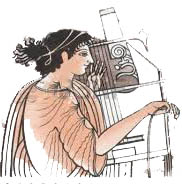FESTIVAL’S TIME
2nd Grade History: chapter 15
A festival is taking place ( page 130-13 ) (Greek educational system)
 |
Materials for the lessonDifferent groups of cards , that portray traditional ceramics, fabrics, traditional tools and carpets, old clocks.Lego animals that student have bring in the class.Cd of traditional Greek musicA picture that depicts an old time festivalFood,( toasts, fruits, cake, juices, etc ) that students bring to school everyday for the breaks.Teacher’s bell |
Layout of the classroomThe classroom needs space for action. The desks have been placed around the class, as they will be the stalls, where students will rest the products they going to sale.Space in the center of the class, for the traditional dance |
|
Phase 1The teacher starts the lesson by showing the picture to the students and giving some information about the Greek festivals that take place everywhere at Greek’s villages and cities. He /she tells that it’s a traditional custom and it’s origin comes from the very distant past, thousands of years before. At first, it was a prayer meeting and it steel is, but it also had an a mercantile purpose. It took place on villages and cities squares and people traded their products (ceramics, tools, fabrics, domestic animals, etc ) off other which were deprived of. At nights, on the duration of the festivals ,people were having fun by eating, drinking and dancing traditional dances, under the rhythm of traditional band, at nights until the dawn. Things have changing in our days ,but it is still a great celebration. |
|
Phase 2In this phase, under the teacher’s instructions ,students take their places behind the stalls and starting to hype their products and make dialog with people who are interested to exchange products, as money for years , was not the mean of payment.For example:-I have the best tools in the world. Come here my friends, come and see.-I want that tool. It’s very useful for my job. I can give you a clock I have bring from Italy.– let me see. It looks very old but I need one. Take the tool and give me the clock.Or-I have bring wheat from my field. Here is the best wheat.– I exchange 10 kilos of wheat ,for one chicken.– Are you trying to rip me off? Three chicken for 10 kilos. Nothing less.-Take two chicken. You can shell their eggs also. They spawn big eggs.– Ok then. Take the wheat. Give me the two chickens. |
|
Phase 3In this phase, desks that were the stalls, are placed in the row to be one big table where people after that busy day, will celebrate this specific day by eating, drinking and dancing a lot, under the sounds of the traditional music.Students place their foods on the tables, they share the foods they have brought, they pretend to drink wine and suggest toasts to each other.Music starts and student have a lot of fun. At the end, they dance traditional dances under the sounds of the traditional clarinet. |
|
Phase 4Students return to their desks and the teacher presents the course with the known traditional form. The goal of this chapter has been achieved as they have learned a lot about Greek festivals and have acted the traditional way of shindig. |

 SmartOWL
SmartOWL